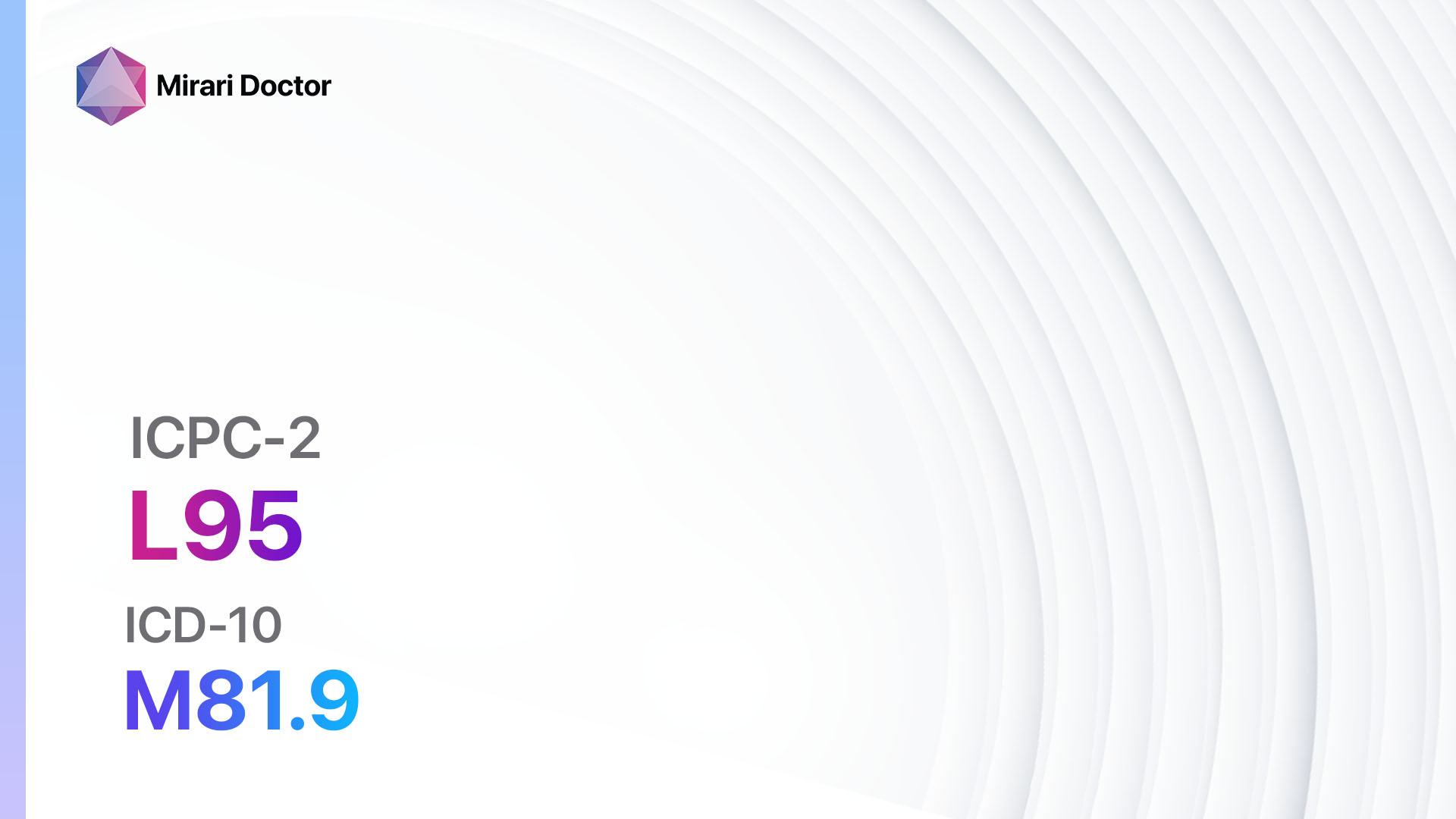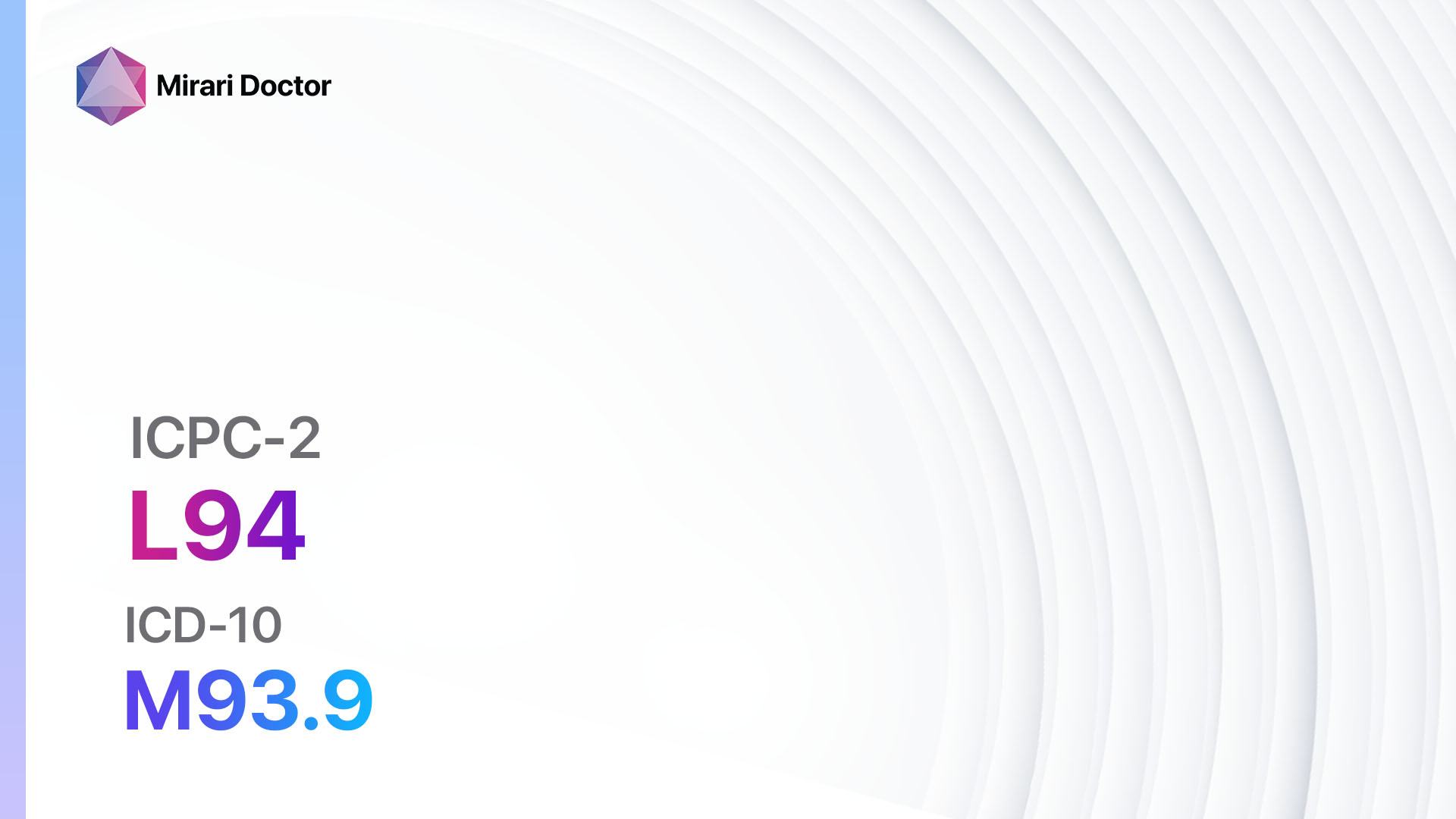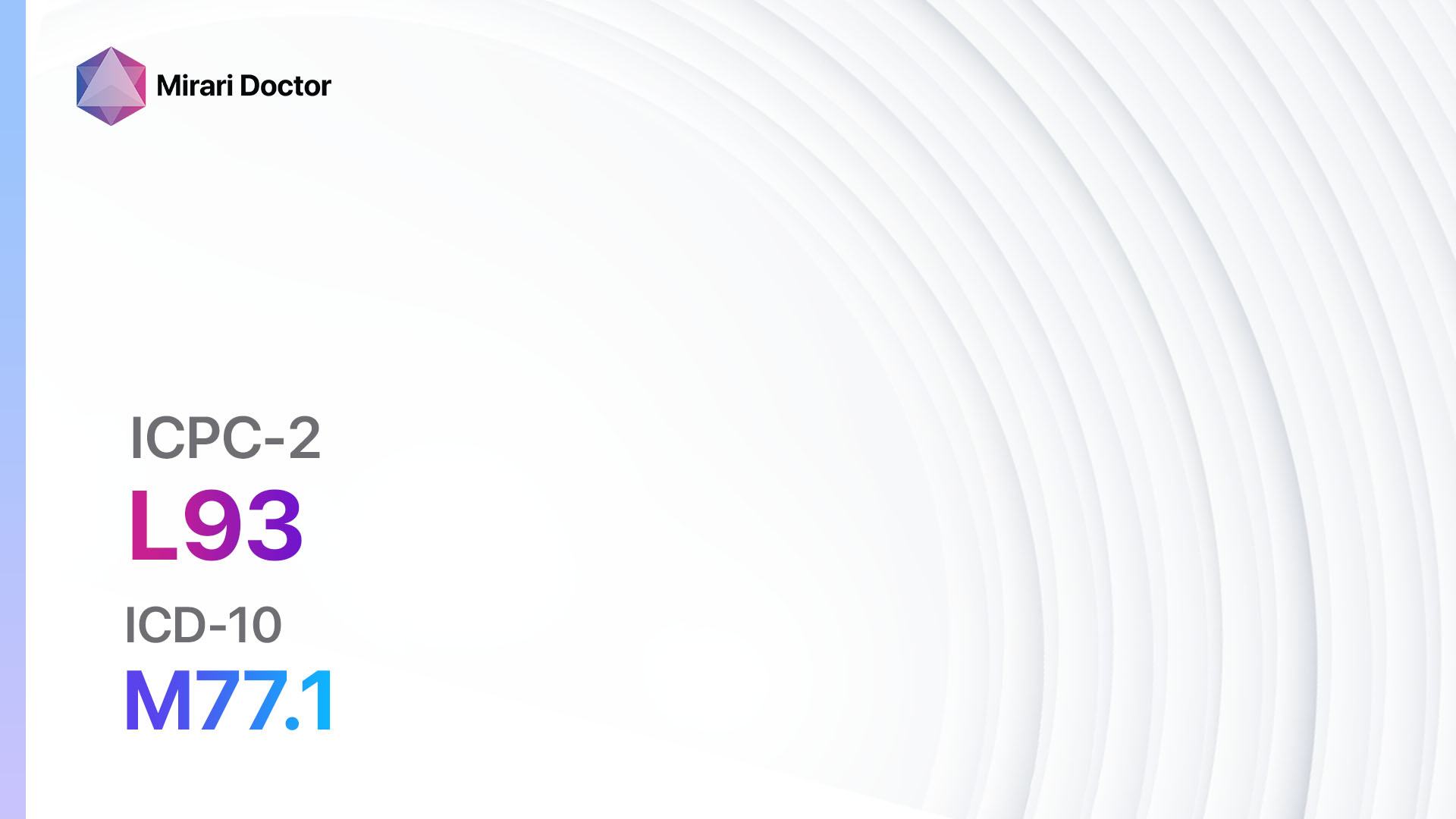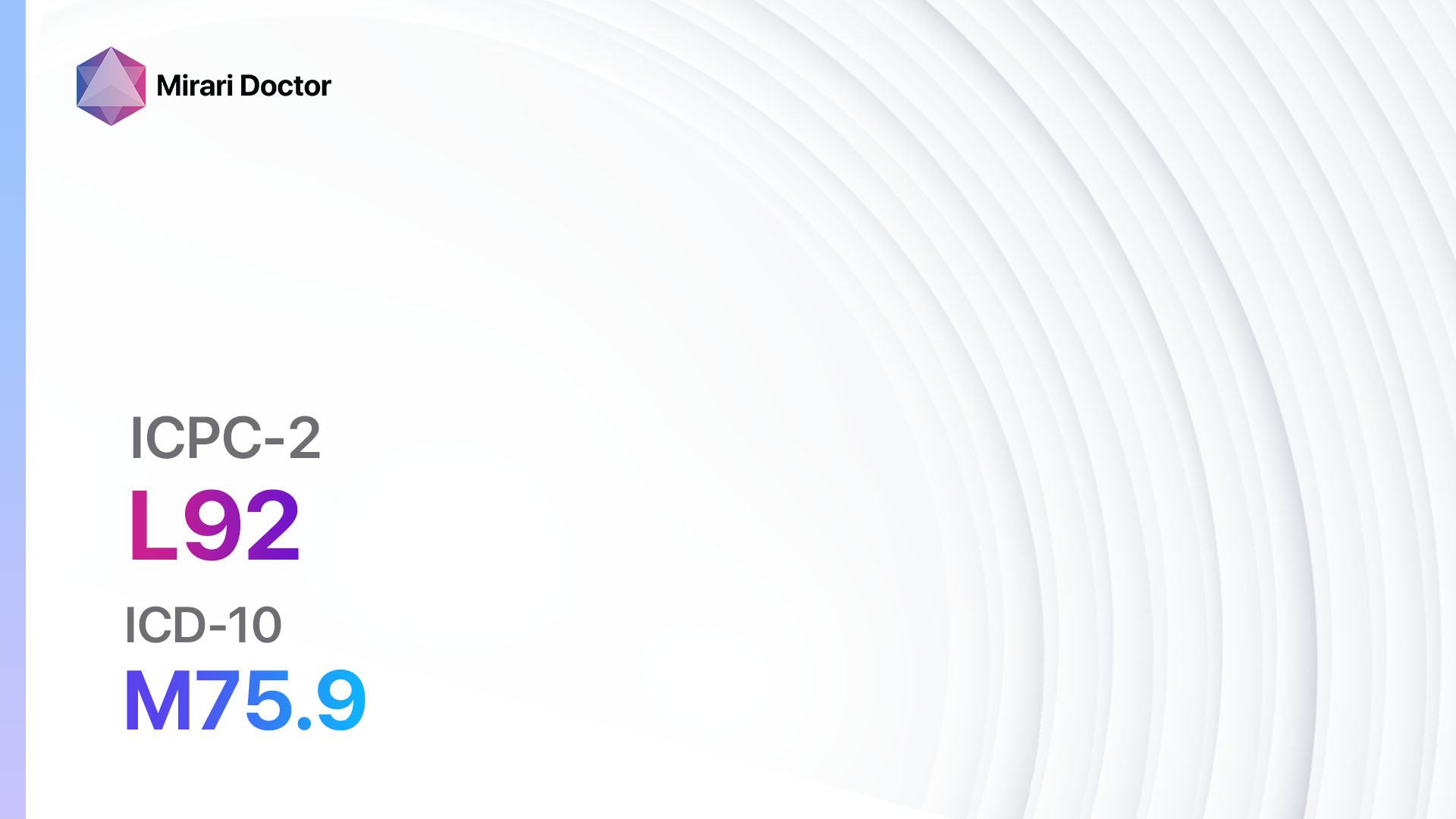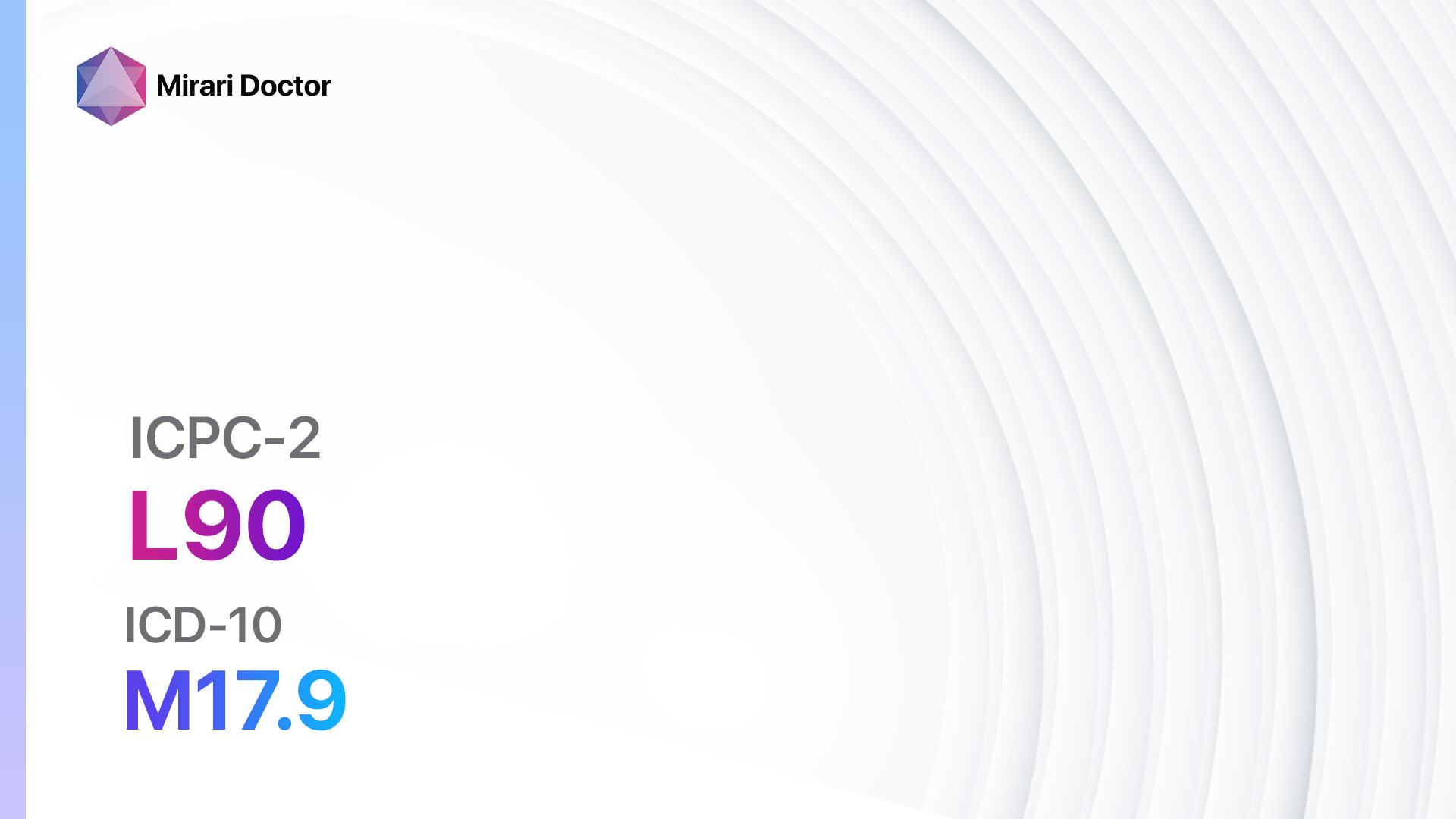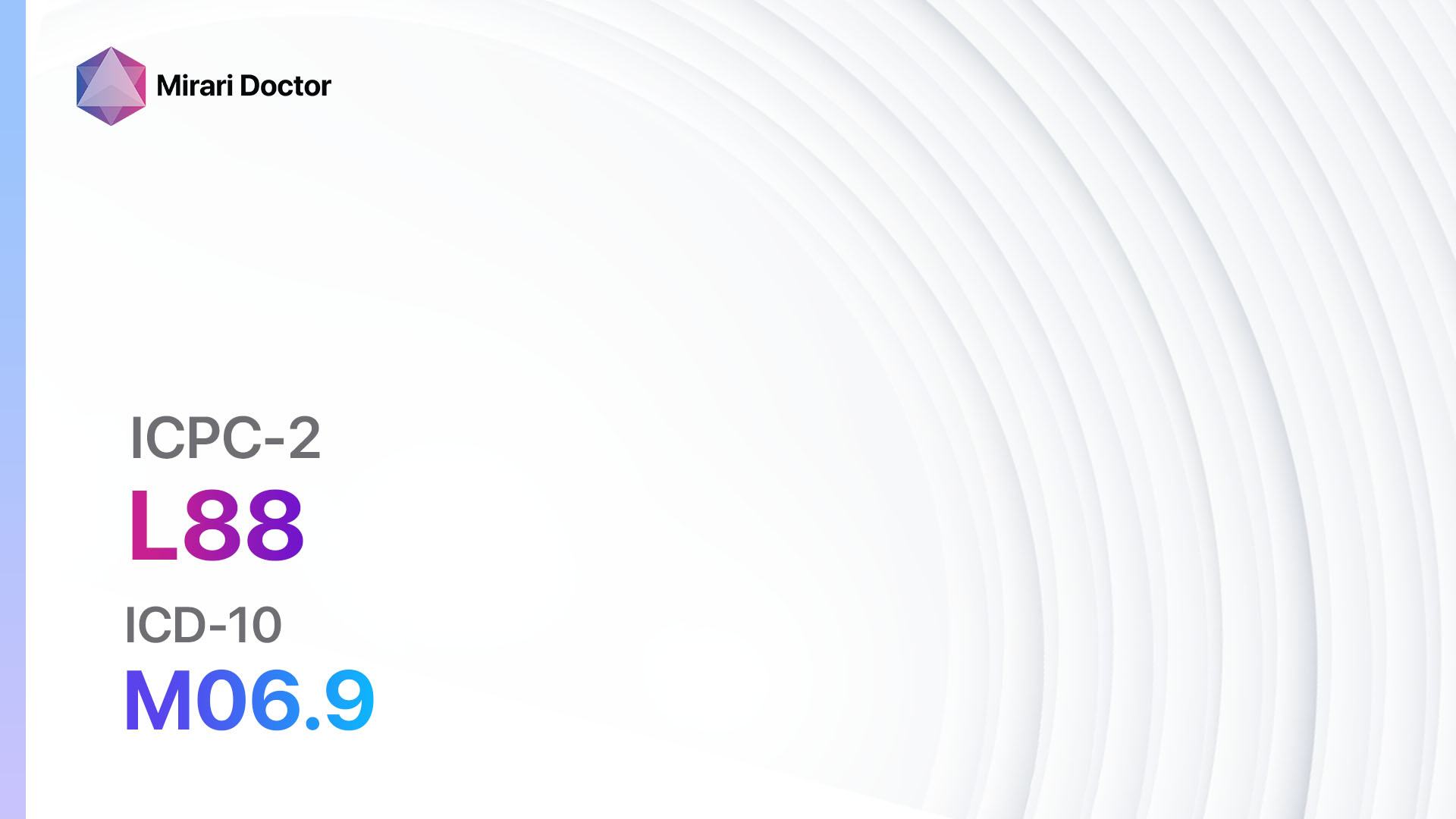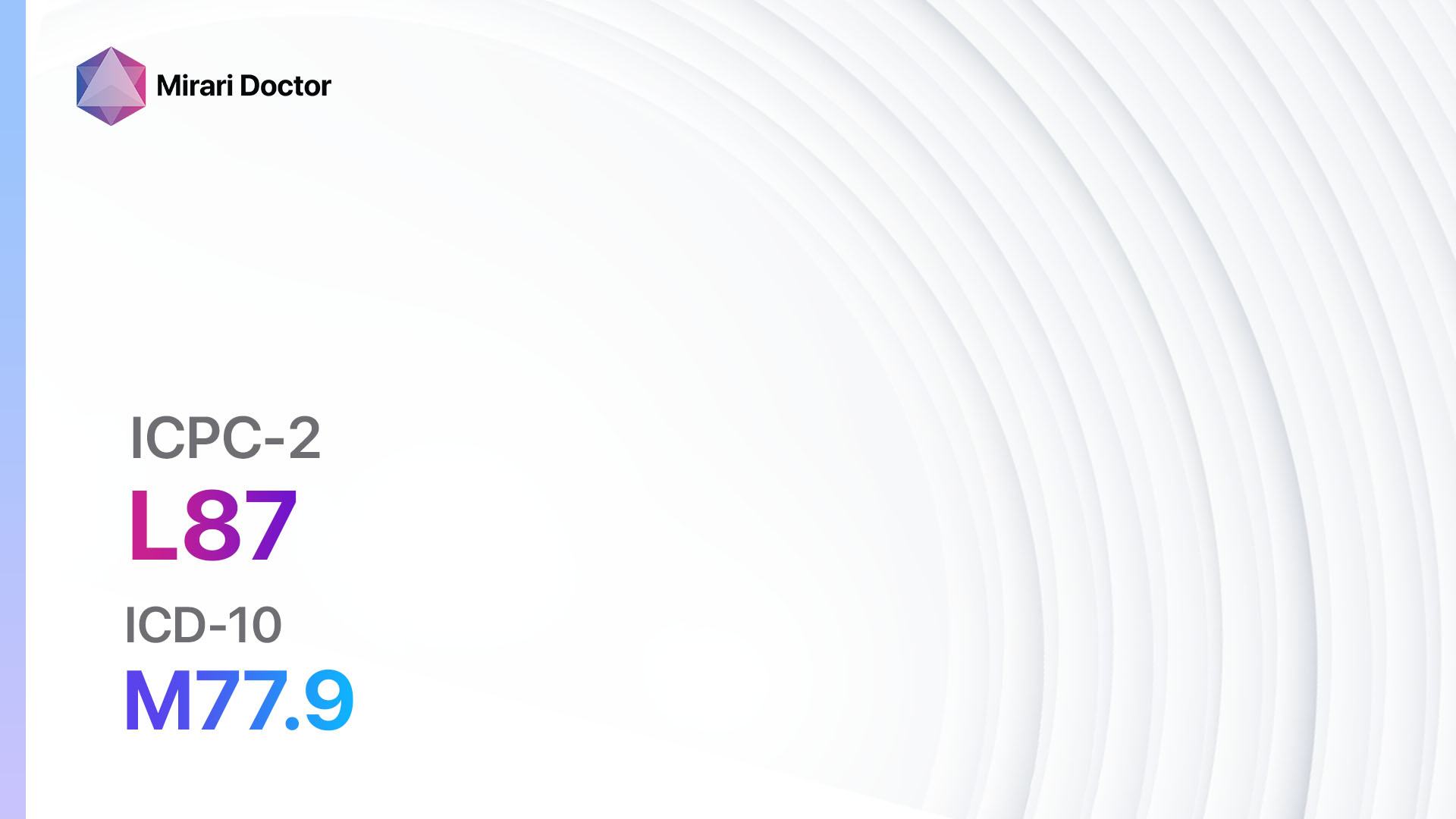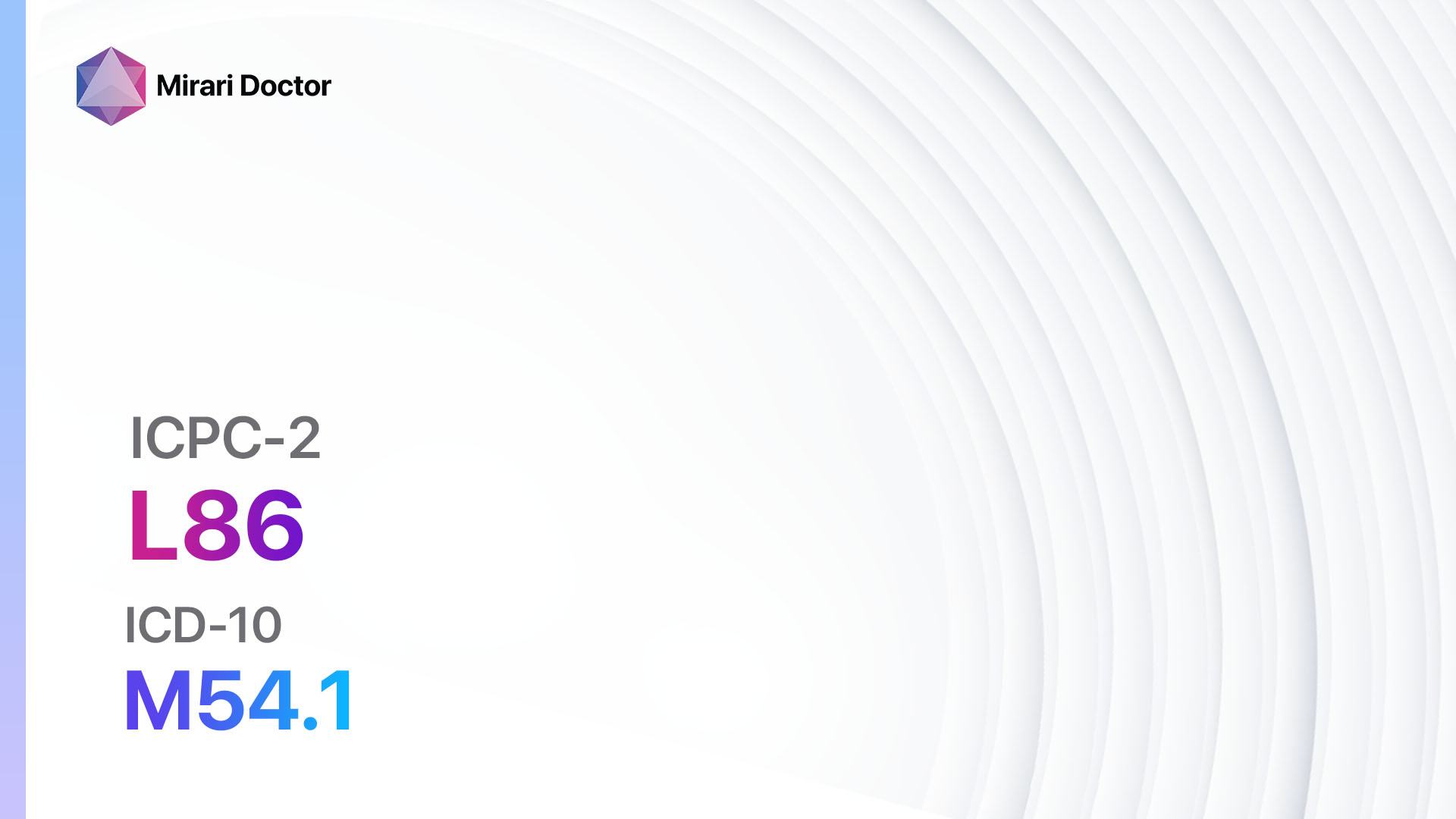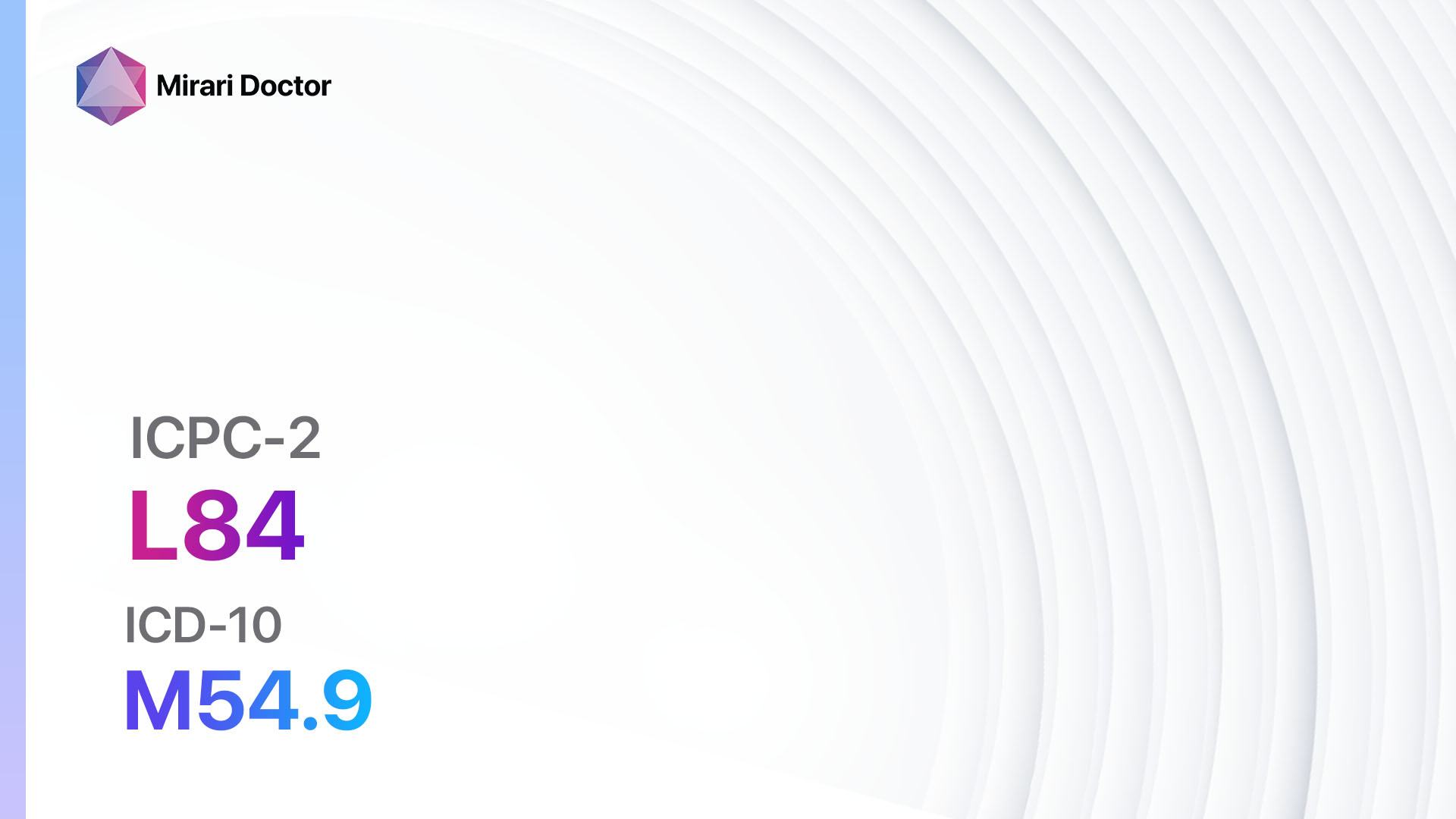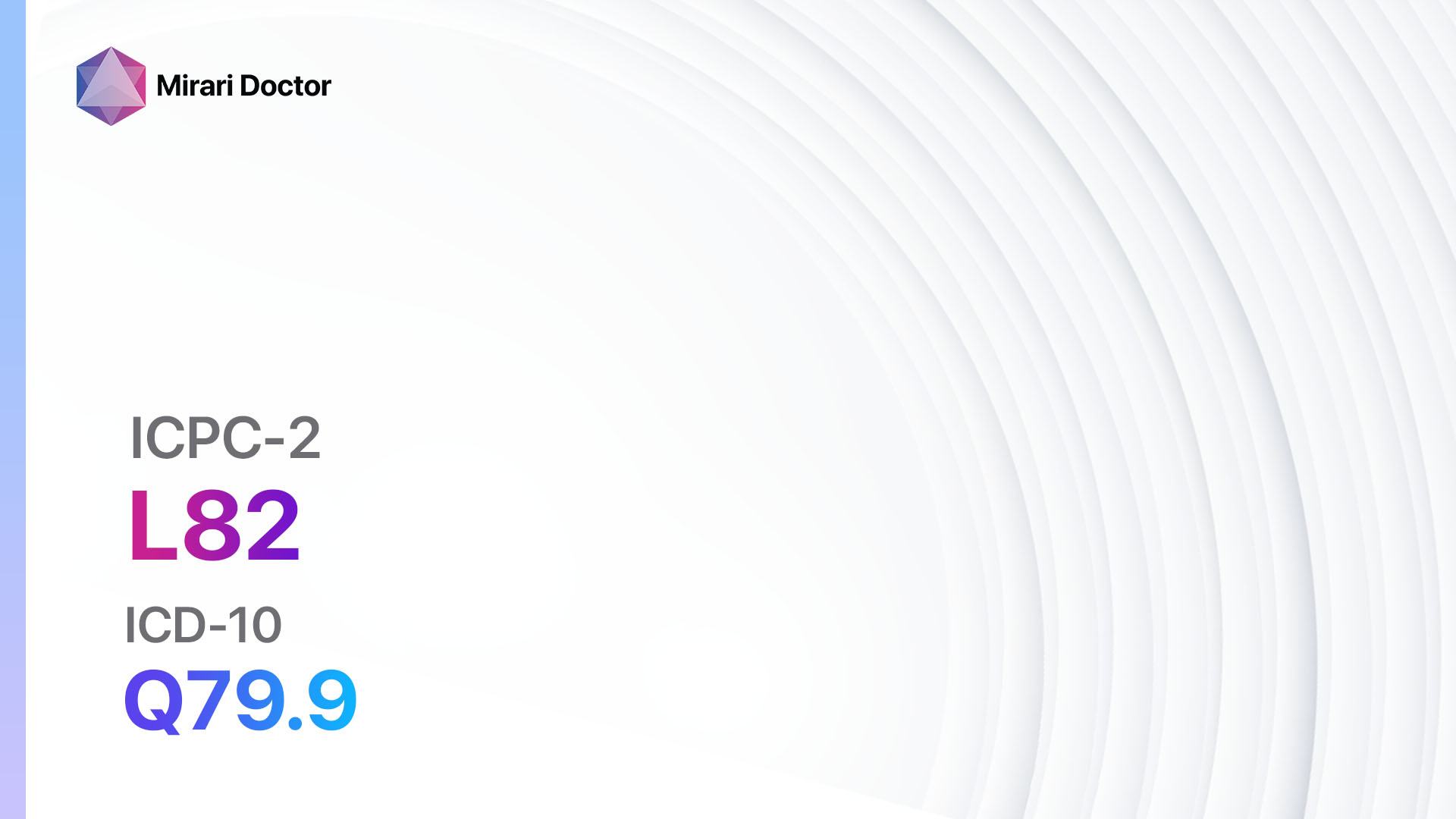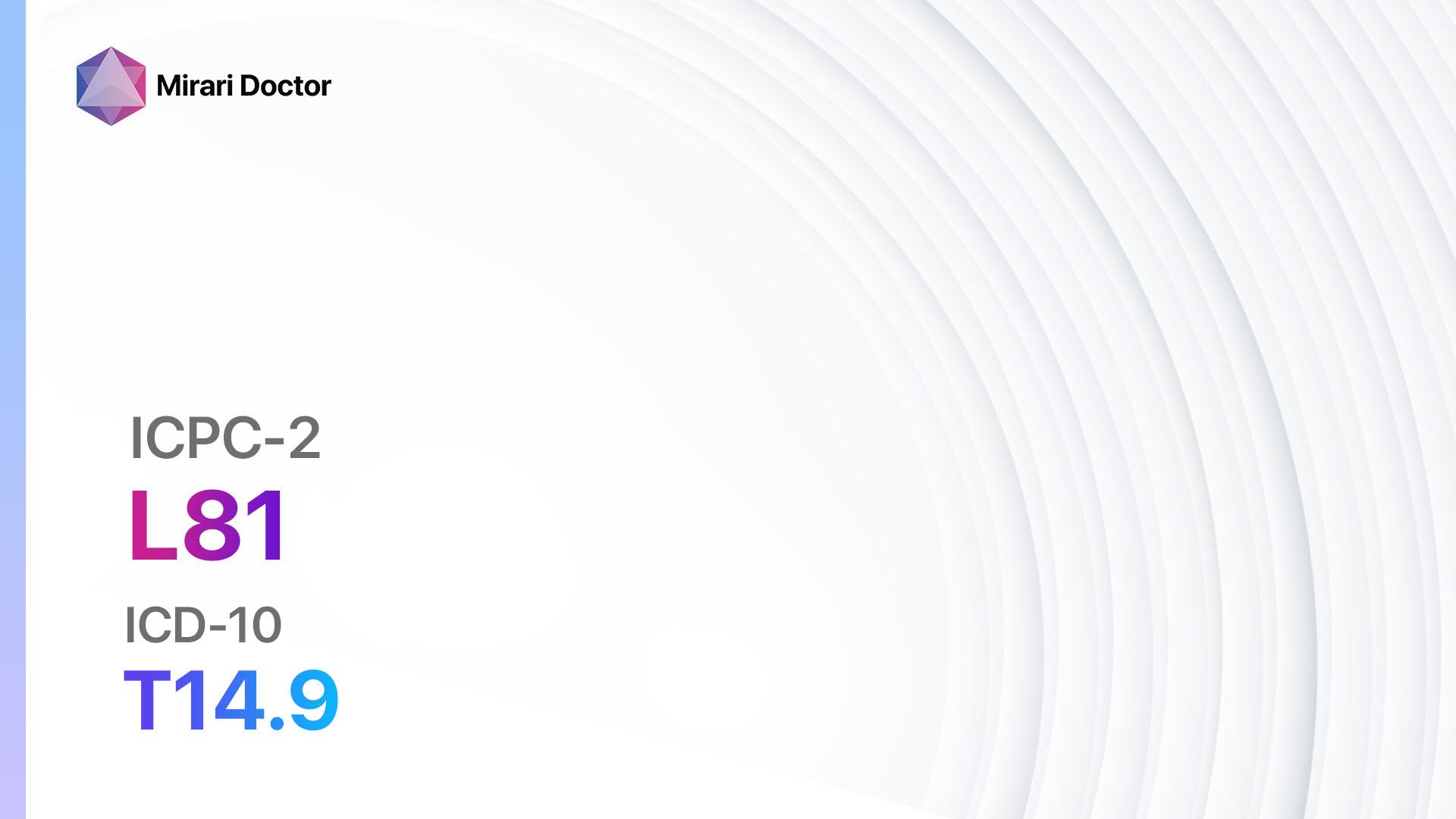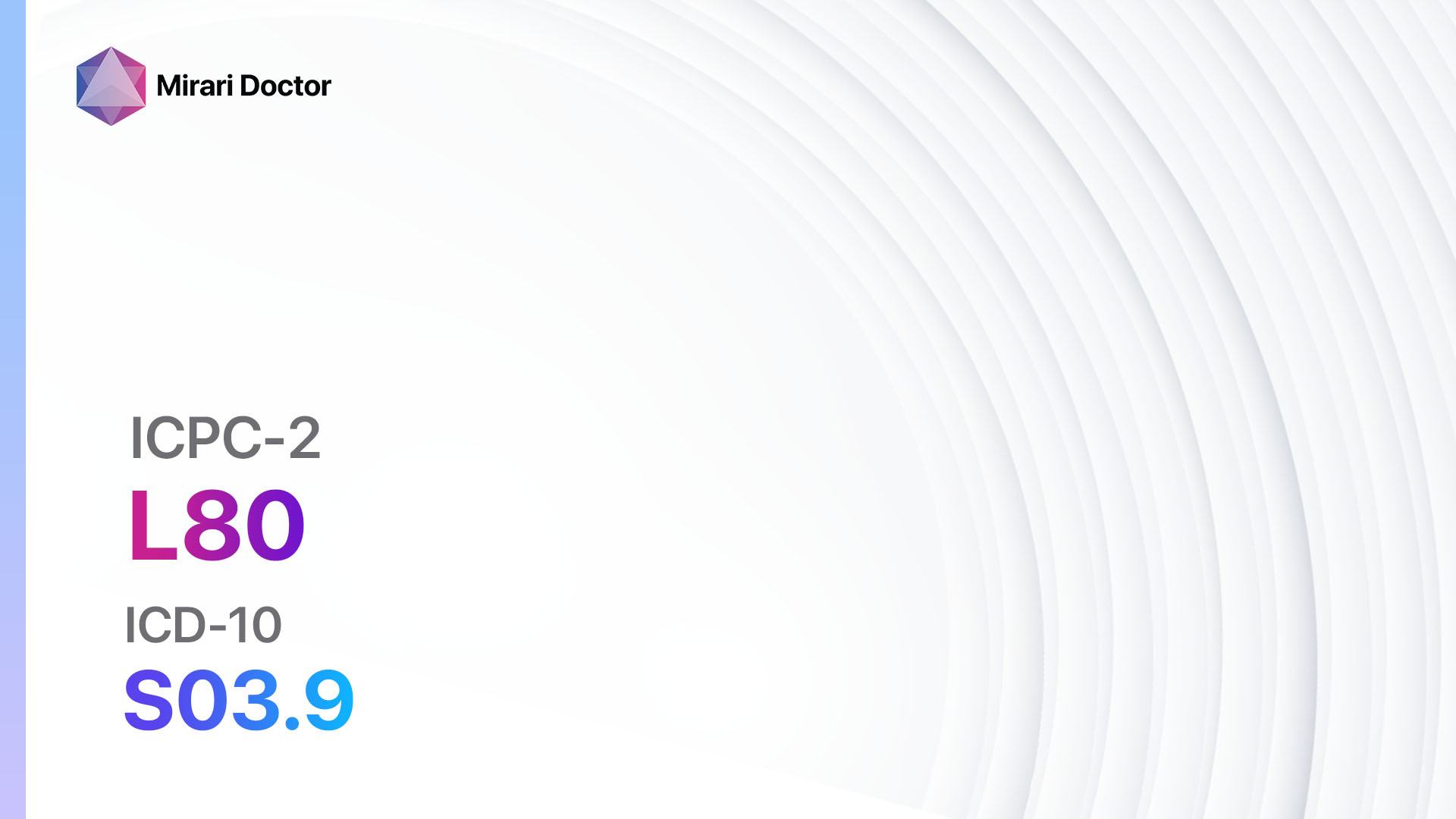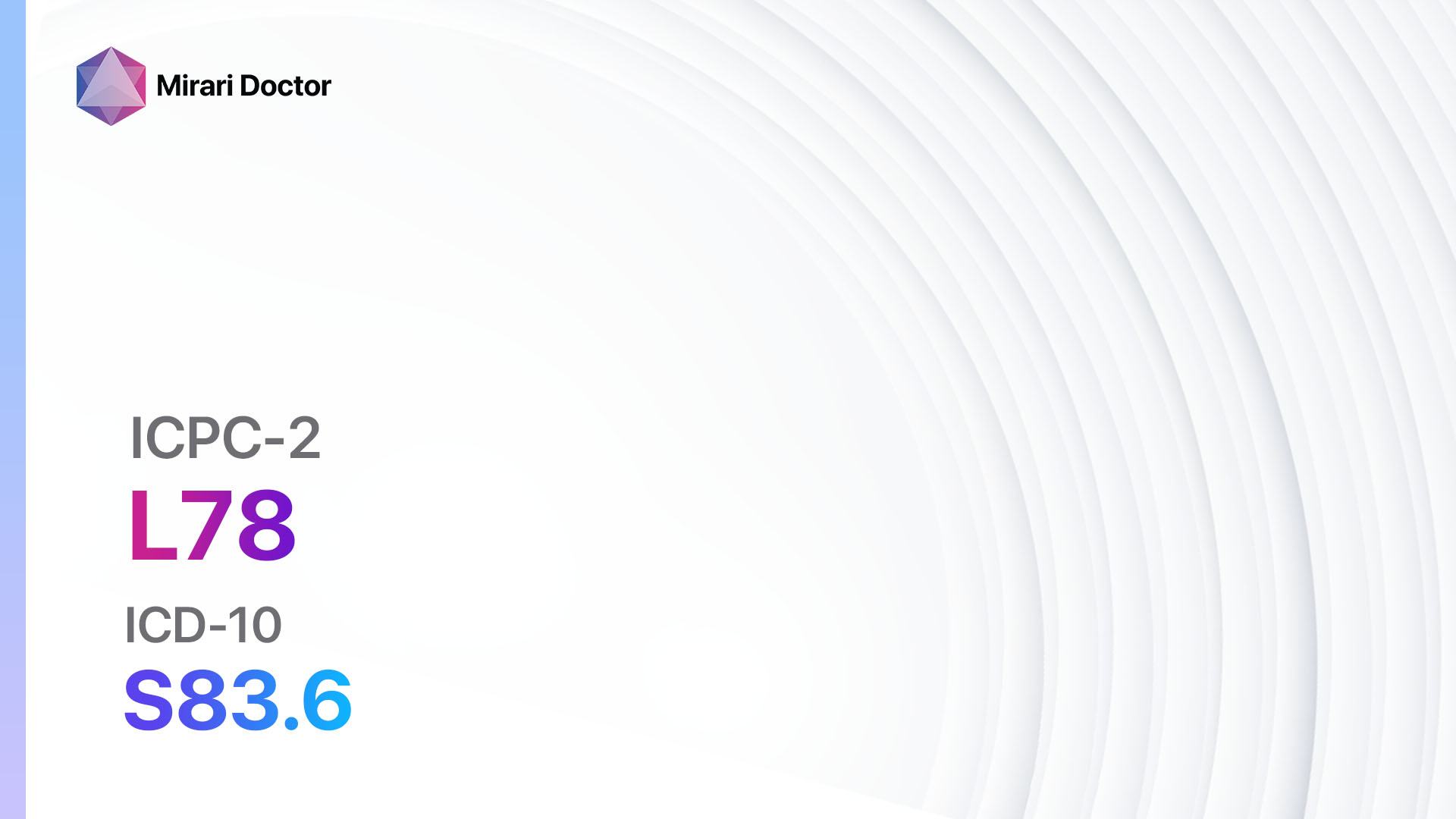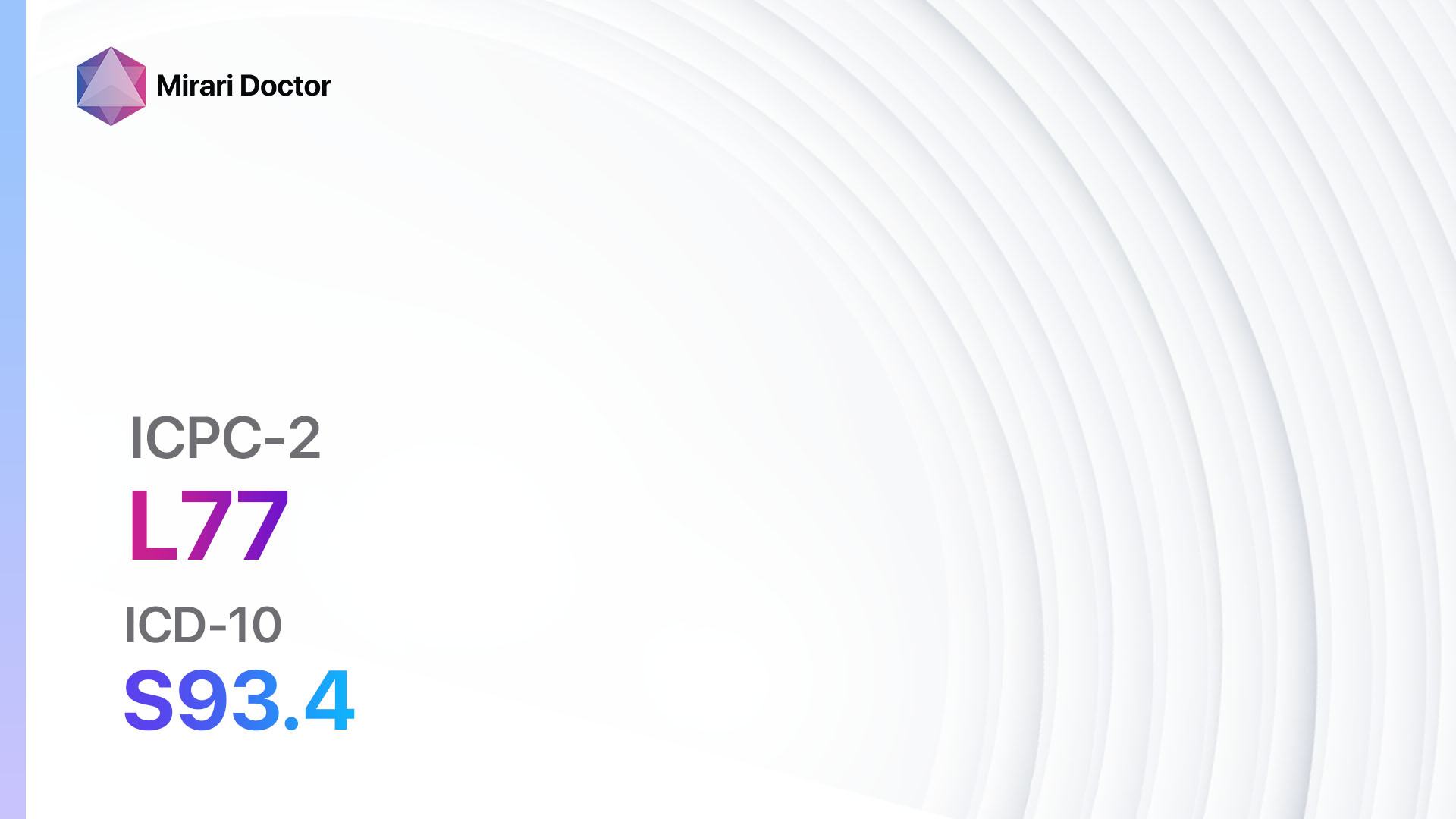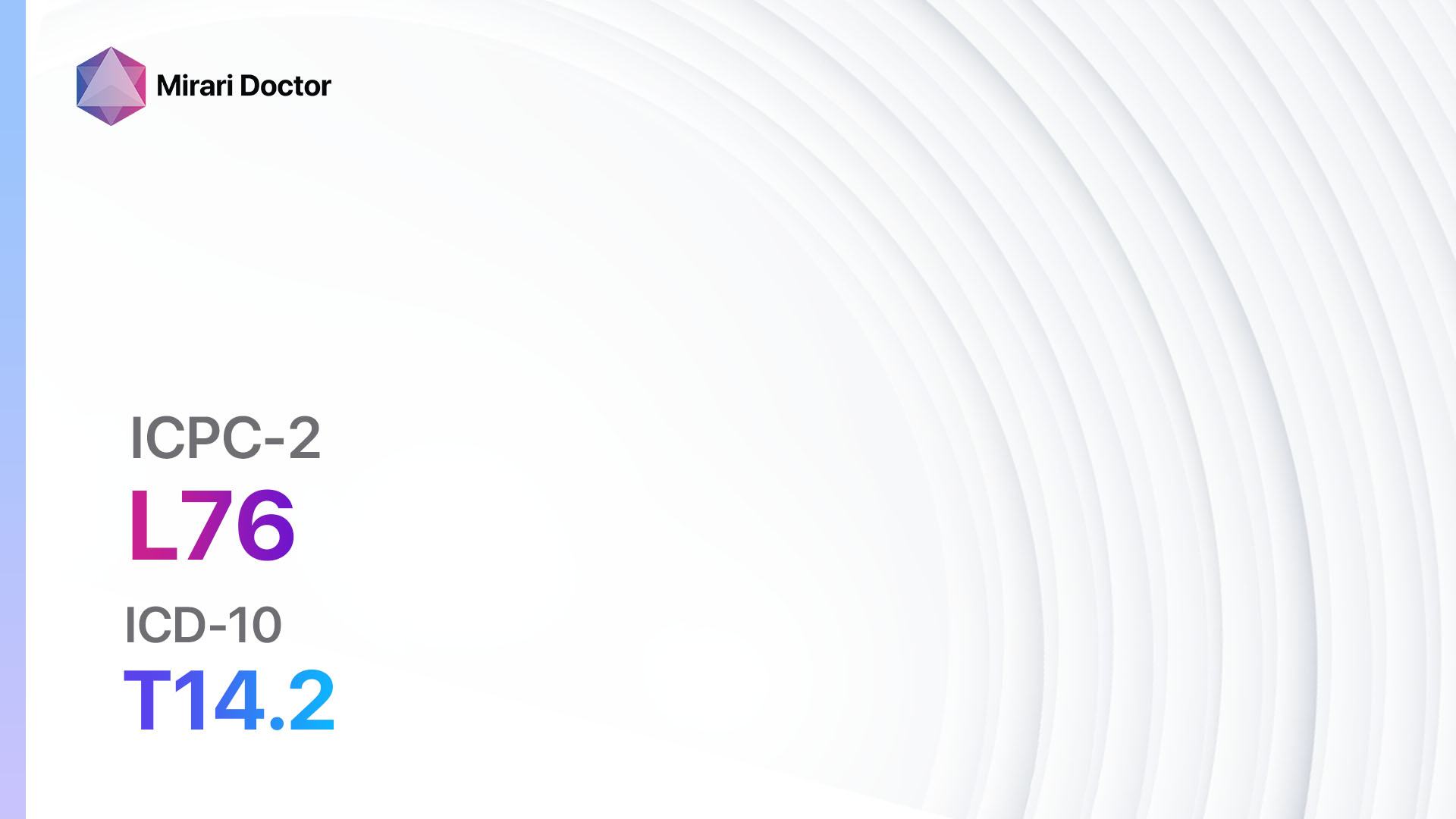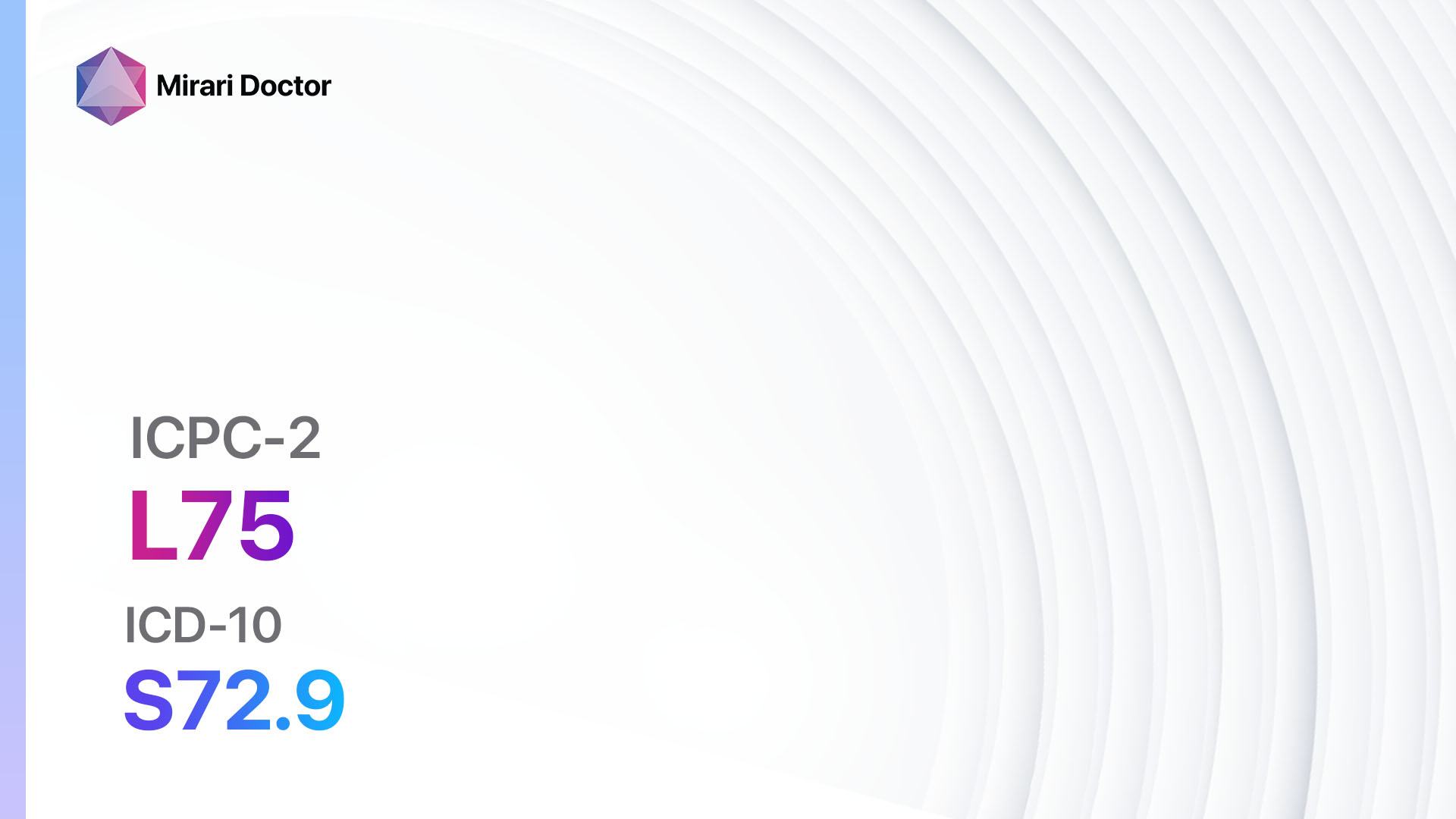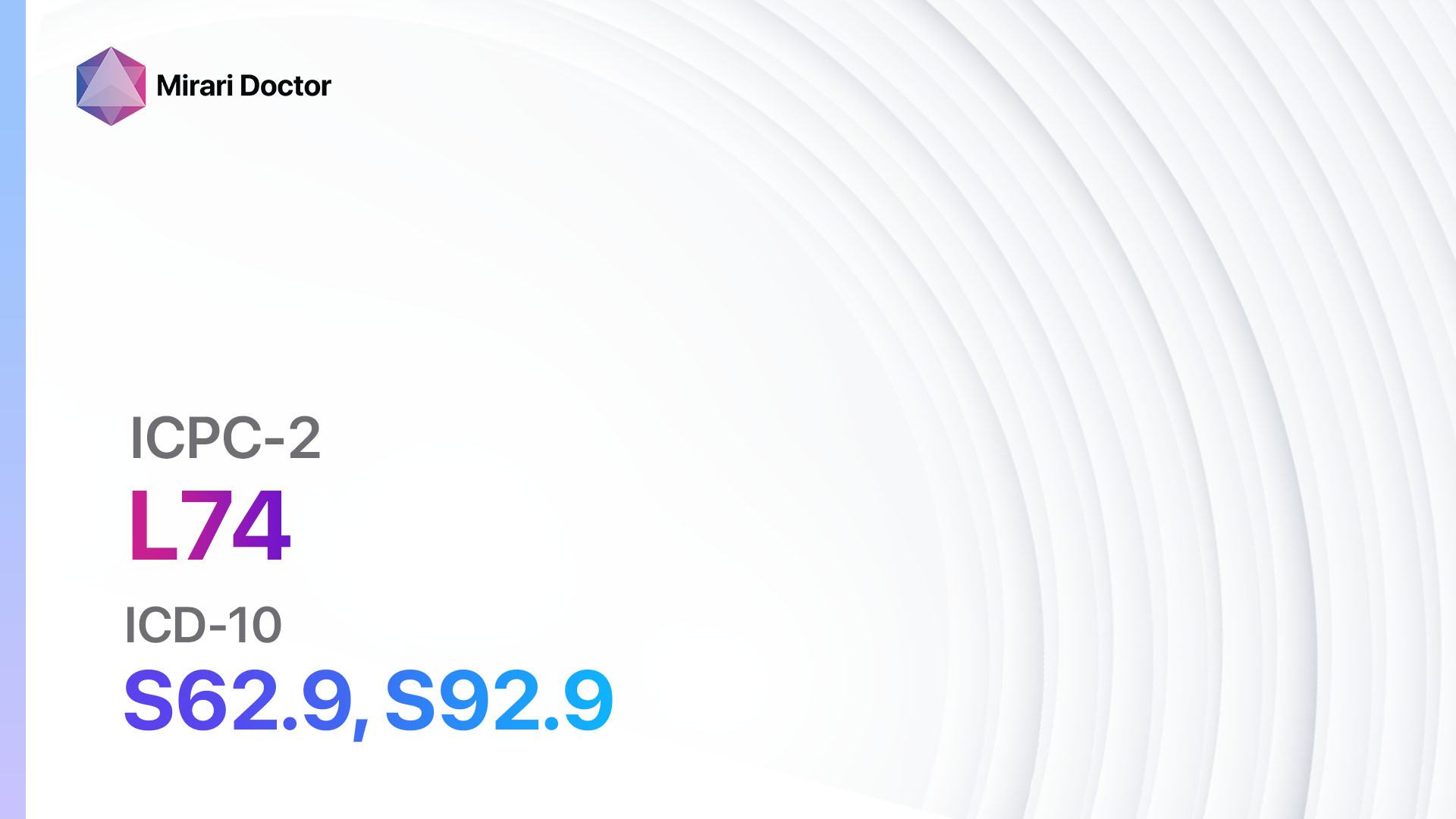
Introduction
Back pain is a common complaint that can significantly impact a person’s quality of life. It can be caused by various factors, including muscle strain, poor posture, herniated discs, or underlying medical conditions[1]. The aim of this guide is to provide healthcare professionals with a comprehensive approach to diagnosing and managing back pain.
Codes
Symptoms
- Dull, aching pain in the back
- Sharp, shooting pain that radiates down the leg (sciatica)
- Stiffness and limited range of motion
- Muscle spasms
- Difficulty standing or walking for extended periods[4]
Causes
- Muscle strain or sprain
- Poor posture
- Herniated or bulging discs
- Spinal stenosis
- Osteoarthritis
- Scoliosis
- Osteoporosis
- Infection or tumor (less common)[5]
Diagnostic Steps
Medical History
- Gather information about the onset, duration, and location of the pain
- Ask about any recent injuries or trauma
- Inquire about any underlying medical conditions, such as arthritis or osteoporosis
- Assess the impact of the pain on daily activities and quality of life
- Identify any red flags, such as unexplained weight loss or loss of bowel or bladder control[6]
Physical Examination
- Evaluate posture and spinal alignment
- Palpate the back for tenderness or muscle spasms
- Assess range of motion and any limitations
- Perform neurological tests, such as checking reflexes and sensation in the legs
- Look for any signs of inflammation or swelling[7]
Laboratory Tests
- Complete blood count (CBC) to rule out infection or inflammation
- Erythrocyte sedimentation rate (ESR) or C-reactive protein (CRP) to assess for inflammation
- Rheumatoid factor or antinuclear antibody (ANA) test to screen for autoimmune conditions
- Blood glucose levels to rule out diabetes as a cause of neuropathy[8]
Diagnostic Imaging
- X-rays: Useful for evaluating bone structure and alignment, identifying fractures or tumors
- Magnetic resonance imaging (MRI): Provides detailed images of soft tissues, such as discs, ligaments, and nerves
- Computed tomography (CT) scan: Helpful for assessing bony structures and detecting spinal stenosis or fractures
- Ultrasound: Can be used to visualize soft tissues, such as muscles and tendons[9]
Other Tests
- Electromyography (EMG) and nerve conduction studies (NCS): Assess nerve function and identify any nerve compression or damage
- Bone density scan (DEXA): Measures bone density and assesses for osteoporosis
- Discography: Involves injecting a contrast dye into the discs to identify the source of pain
- Facet joint injections: Used to diagnose and treat pain originating from the facet joints[10]
Follow-up and Patient Education
- Schedule follow-up appointments to monitor progress and adjust treatment if necessary
- Provide education on proper posture, body mechanics, and ergonomics
- Encourage regular exercise and stretching to improve strength and flexibility
- Discuss pain management strategies, such as heat or cold therapy, over-the-counter pain relievers, or prescription medications if needed
- Emphasize the importance of maintaining a healthy lifestyle, including weight management and smoking cessation if applicable
Possible Interventions
Traditional Interventions
Medications:
Top 5 drugs for back pain:
- Nonsteroidal anti-inflammatory drugs (NSAIDs) (e.g., Ibuprofen, Naproxen):
- Cost: Generic versions can be $3-$20/month.
- Contraindications: History of gastrointestinal bleeding, kidney disease.
- Side effects: Upset stomach, increased risk of bleeding.
- Severe side effects: Kidney damage, allergic reactions.
- Drug interactions: Blood thinners, certain blood pressure medications.
- Warning: Prolonged use may increase the risk of cardiovascular events.
- Muscle relaxants (e.g., Cyclobenzaprine, Methocarbamol):
- Cost: Generic versions can be $4-$30/month.
- Contraindications: Glaucoma, urinary retention.
- Side effects: Drowsiness, dry mouth.
- Severe side effects: Severe allergic reactions, liver toxicity.
- Drug interactions: Sedatives, alcohol.
- Warning: May cause drowsiness, avoid driving or operating heavy machinery.
- Opioids (e.g., Oxycodone, Hydrocodone):
- Cost: Generic versions can be $10-$100/month.
- Contraindications: Respiratory depression, history of substance abuse.
- Side effects: Constipation, drowsiness.
- Severe side effects: Respiratory depression, addiction.
- Drug interactions: Sedatives, benzodiazepines.
- Warning: High risk of dependence and addiction, should be used cautiously and for short durations.
- Antidepressants (e.g., Amitriptyline, Duloxetine):
- Cost: Generic versions can be $4-$30/month.
- Contraindications: Recent myocardial infarction, glaucoma.
- Side effects: Dry mouth, drowsiness.
- Severe side effects: Suicidal thoughts, serotonin syndrome.
- Drug interactions: Monoamine oxidase inhibitors (MAOIs), other serotonergic medications.
- Warning: May take several weeks to achieve therapeutic effect.
- Topical analgesics (e.g., Lidocaine patches, Capsaicin cream):
- Cost: Lidocaine patches can cost $10-$30 per patch. Capsaicin cream can cost $10-$20 per tube.
- Contraindications: Allergy to local anesthetics, broken or irritated skin.
- Side effects: Skin irritation, burning sensation.
- Severe side effects: Allergic reactions, skin rash.
- Drug interactions: None significant.
- Warning: Avoid contact with eyes or mucous membranes.
Alternative Drugs:
- Gabapentin: An anticonvulsant that can help with neuropathic pain.
- Tricyclic antidepressants: Amitriptyline and nortriptyline can be effective for chronic pain.
- Steroid injections: Can provide short-term relief for severe pain and inflammation.
- Benzodiazepines: May be used for short-term relief of muscle spasms and anxiety.
- Acetaminophen: Can be used as an alternative for mild to moderate pain.
Surgical Procedures:
- Discectomy: Surgical removal of a herniated disc that is causing nerve compression. Cost: $15,000 to $50,000.
- Spinal fusion: Joins two or more vertebrae together to stabilize the spine. Cost: $50,000 to $100,000.
- Laminectomy: Removes a portion of the vertebral bone to relieve pressure on the spinal cord or nerves. Cost: $50,000 to $100,000.
Alternative Interventions
- Chiropractic care: Involves manual adjustments of the spine to improve alignment and relieve pain. Cost: $30-$200 per session.
- Physical therapy: Focuses on exercises and stretches to improve strength, flexibility, and posture. Cost: $50-$150 per session.
- Massage therapy: Helps relax muscles and improve circulation. Cost: $60-$120 per session.
- Acupuncture: May help reduce pain and improve blood flow. Cost: $60-$120 per session.
- Yoga: Incorporates stretching, strengthening, and relaxation techniques. Cost: Varies depending on the location and instructor.
Lifestyle Interventions
- Maintain a healthy weight to reduce strain on the back.
- Practice good posture and body mechanics.
- Engage in regular exercise, such as walking or swimming, to strengthen the back muscles.
- Use proper ergonomics at work and home to minimize strain on the back.
- Apply heat or cold therapy to alleviate pain and inflammation.
It is important to note that the cost ranges provided are approximate and may vary depending on the location and availability of the interventions. It is recommended to consult with a healthcare professional for personalized treatment options and cost estimates.
Mirari Cold Plasma Alternative Intervention
Understanding Mirari Cold Plasma
- Safe and Non-Invasive Treatment: Mirari Cold Plasma is a safe and non-invasive treatment option for various skin conditions. It does not require incisions, minimizing the risk of scarring, bleeding, or tissue damage.
- Efficient Extraction of Foreign Bodies: Mirari Cold Plasma facilitates the removal of foreign bodies from the skin by degrading and dissociating organic matter, allowing easier access and extraction.
- Pain Reduction and Comfort: Mirari Cold Plasma has a local analgesic effect, providing pain relief during the treatment, making it more comfortable for the patient.
- Reduced Risk of Infection: Mirari Cold Plasma has antimicrobial properties, effectively killing bacteria and reducing the risk of infection.
- Accelerated Healing and Minimal Scarring: Mirari Cold Plasma stimulates wound healing and tissue regeneration, reducing healing time and minimizing the formation of scars.
Mirari Cold Plasma Prescription
Video instructions for using Mirari Cold Plasma Device – L02 Back symptom/complaint (ICD-10:M54.9)
| Mild | Moderate | Severe |
| Mode setting: 2 (Wound Healing) Location: 0 (Localized) Morning: 15 minutes, Evening: 15 minutes |
Mode setting: 2 (Wound Healing) Location: 0 (Localized) Morning: 30 minutes, Lunch: 30 minutes, Evening: 30 minutes |
Mode setting: 2 (Wound Healing) Location: 0 (Localized) Morning: 30 minutes, Lunch: 30 minutes, Evening: 30 minutes |
| Mode setting: 9 (Arthritis) Location: 0 (Localized) Morning: 15 minutes, Evening: 15 minutes |
Mode setting: 9 (Arthritis) Location: 0 (Localized) Morning: 30 minutes, Lunch: 30 minutes, Evening: 30 minutes |
Mode setting: 9 (Arthritis) Location: 0 (Localized) Morning: 30 minutes, Lunch: 30 minutes, Evening: 30 minutes |
| Mode setting: 7 (Immunotherapy) Location: 1 (Sacrum) Morning: 15 minutes, Evening: 15 minutes |
Mode setting: 7 (Immunotherapy) Location: 1 (Sacrum) Morning: 30 minutes, Lunch: 30 minutes, Evening: 30 minutes |
Mode setting: 7 (Immunotherapy) Location: 1 (Sacrum) Morning: 30 minutes, Lunch: 30 minutes, Evening: 30 minutes |
| Total Morning: 45 minutes approx. $7.50 USD, Evening: 45 minutes approx. $7.50 USD |
Total Morning: 90 minutes approx. $15 USD, Lunch: 90 minutes approx. $15 USD, Evening: 90 minutes approx. $15 USD, |
Total Morning: 90 minutes approx. $15 USD, Lunch: 90 minutes approx. $15 USD, Evening: 90 minutes approx. $15 USD, |
| Usual treatment for 7-60 days approx. $105 USD – $900 USD | Usual treatment for 6-8 weeks approx. $1,890 USD – $2,520 USD |
Usual treatment for 3-6 months approx. $4,050 USD – $8,100 USD
|
 |
|
Use the Mirari Cold Plasma device to treat Back symptom/complaint effectively.
WARNING: MIRARI COLD PLASMA IS DESIGNED FOR THE HUMAN BODY WITHOUT ANY ARTIFICIAL OR THIRD PARTY PRODUCTS. USE OF OTHER PRODUCTS IN COMBINATION WITH MIRARI COLD PLASMA MAY CAUSE UNPREDICTABLE EFFECTS, HARM OR INJURY. PLEASE CONSULT A MEDICAL PROFESSIONAL BEFORE COMBINING ANY OTHER PRODUCTS WITH USE OF MIRARI.
Step 1: Cleanse the Skin
- Start by cleaning the affected area of the skin with a gentle cleanser or mild soap and water. Gently pat the area dry with a clean towel.
Step 2: Prepare the Mirari Cold Plasma device
- Ensure that the Mirari Cold Plasma device is fully charged or has fresh batteries as per the manufacturer’s instructions. Make sure the device is clean and in good working condition.
- Switch on the Mirari device using the power button or by following the specific instructions provided with the device.
- Some Mirari devices may have adjustable settings for intensity or treatment duration. Follow the manufacturer’s instructions to select the appropriate settings based on your needs and the recommended guidelines.
Step 3: Apply the Device
- Place the Mirari device in direct contact with the affected area of the skin. Gently glide or hold the device over the skin surface, ensuring even coverage of the area experiencing.
- Slowly move the Mirari device in a circular motion or follow a specific pattern as indicated in the user manual. This helps ensure thorough treatment coverage.
Step 4: Monitor and Assess:
- Keep track of your progress and evaluate the effectiveness of the Mirari device in managing your Back symptom/complaint. If you have any concerns or notice any adverse reactions, consult with your health care professional.
Note
This guide is for informational purposes only and should not replace the advice of a medical professional. Always consult with your healthcare provider or a qualified medical professional for personal advice, diagnosis, or treatment. Do not solely rely on the information presented here for decisions about your health. Use of this information is at your own risk. The authors of this guide, nor any associated entities or platforms, are not responsible for any potential adverse effects or outcomes based on the content.
Mirari Cold Plasma System Disclaimer
- Purpose: The Mirari Cold Plasma System is a Class 2 medical device designed for use by trained healthcare professionals. It is registered for use in Thailand and Vietnam. It is not intended for use outside of these locations.
- Informational Use: The content and information provided with the device are for educational and informational purposes only. They are not a substitute for professional medical advice or care.
- Variable Outcomes: While the device is approved for specific uses, individual outcomes can differ. We do not assert or guarantee specific medical outcomes.
- Consultation: Prior to utilizing the device or making decisions based on its content, it is essential to consult with a Certified Mirari Tele-Therapist and your medical healthcare provider regarding specific protocols.
- Liability: By using this device, users are acknowledging and accepting all potential risks. Neither the manufacturer nor the distributor will be held accountable for any adverse reactions, injuries, or damages stemming from its use.
- Geographical Availability: This device has received approval for designated purposes by the Thai and Vietnam FDA. As of now, outside of Thailand and Vietnam, the Mirari Cold Plasma System is not available for purchase or use.
References
- Hartvigsen, J., Hancock, M. J., Kongsted, A., Louw, Q., Ferreira, M. L., Genevay, S., … & Woolf, A. (2018). What low back pain is and why we need to pay attention. The Lancet, 391(10137), 2356-2367.
- WONCA International Classification Committee. (1998). ICPC-2: International classification of primary care. Oxford University Press, USA.
- World Health Organization. (2019). International statistical classification of diseases and related health problems (11th ed.).
- Koes, B. W., Van Tulder, M., Lin, C. W. C., Macedo, L. G., McAuley, J., & Maher, C. (2010). An updated overview of clinical guidelines for the management of non-specific low back pain in primary care. European Spine Journal, 19(12), 2075-2094.
- Maher, C., Underwood, M., & Buchbinder, R. (2017). Non-specific low back pain. The Lancet, 389(10070), 736-747.
- Downie, A., Williams, C. M., Henschke, N., Hancock, M. J., Ostelo, R. W., de Vet, H. C., … & Maher, C. G. (2013). Red flags to screen for malignancy and fracture in patients with low back pain: systematic review. BMJ, 347.
- Bardin, L. D., King, P., & Maher, C. G. (2017). Diagnostic triage for low back pain: a practical approach for primary care. Medical Journal of Australia, 206(6), 268-273.
- Jarvik, J. G., & Deyo, R. A. (2002). Diagnostic evaluation of low back pain with emphasis on imaging. Annals of internal medicine, 137(7), 586-597.
- Chou, R., Qaseem, A., Snow, V., Casey, D., Cross, J. T., Shekelle, P., & Owens, D. K. (2007). Diagnosis and treatment of low back pain: a joint clinical practice guideline from the American College of Physicians and the American Pain Society. Annals of internal medicine, 147(7), 478-491.
- Cohen, S. P., Bhaskar, A., Bhatia, A., Buvanendran, A., Deer, T., Garg, S., … & Naidu, R. (2020). Consensus practice guidelines on interventions for lumbar facet joint pain from a multispecialty, international working group. Regional Anesthesia & Pain Medicine, 45(6), 424-467.
Related articles
Made in USA



